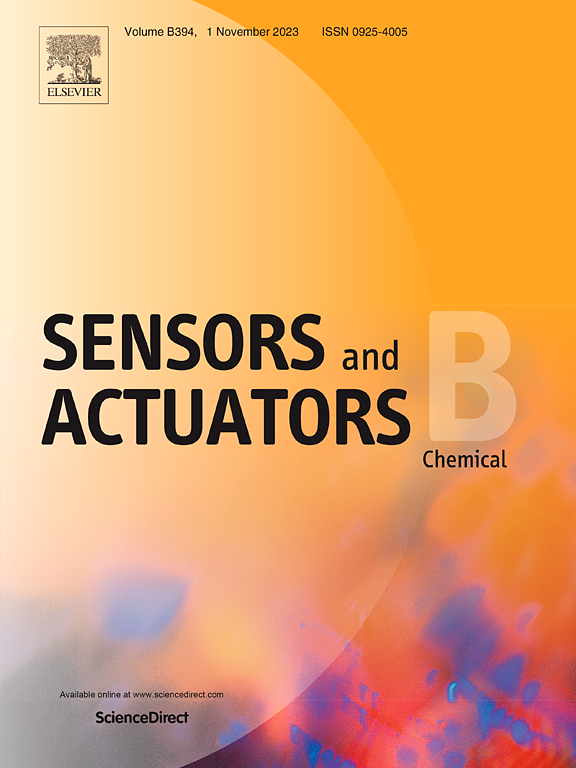Heterostructured multimetallic CoFe2O4@CeCuOx nanozyme from dual-MOF for efficient detection and degradation of hydroquinone
IF 8
1区 化学
Q1 CHEMISTRY, ANALYTICAL
引用次数: 0
Abstract
The phenolic contaminants can severely affect human health and aquatic environment because of their high ecotoxicity and carcinogenic risk. Accordingly, the design and construction of MOF-based nanozymes with superior catalytic performance and high stability is indispensable for sensing and degradation of hydroquinone (HQ) in water. In this work, a novel dual-MOF composite precursor was fabricated by deposition a layer of FeCo-PBAs on CeCu-MOF nanosheets. Then the dual-MOF precursor comprising multiple metallic species Fe, Co, Ce, and Cu within the heterostructure was converted into quasi-dual-MOF (a multimetallic mixed-valence CoFe2O4@CeCuOx composite) by low-temperature pyrolysis. The resulting CoFe2O4@CeCuOx not just inherited exceptional properties of dual-MOF, but also greatly enhanced structural stability and robustness. More importantly, it showed improved peroxidase-like activity by synergistic effects and demonstrated outstanding performance for HQ detection with a wide linear range of 5–300 µM,a low detection limit of 0.458 µM. Further utilizing the peroxidase-like activity, CoFe2O4@CeCuOx was used in activating H2O2 for HQ degradation with 98.3 % removal within 75 min. This work offers a novel avenue for the feasible design of highly active nanozymes for sensing and pollutant removal.
异质结构多金属CoFe2O4@CeCuOx双mof纳米酶高效检测和降解对苯二酚
酚类污染物具有较高的生态毒性和致癌性,严重影响人类健康和水生环境。因此,设计和构建具有优异催化性能和高稳定性的mof基纳米酶是检测和降解水中对苯二酚(HQ)的必要条件。本文通过在CeCu-MOF纳米片上沉积一层feo - pbas,制备了一种新型的双mof复合前驱体。然后通过低温热解将异质结构中含有多种金属Fe、Co、Ce和Cu的双mof前驱体转化为准双mof(多金属混价CoFe2O4@CeCuOx复合材料)。所得CoFe2O4@CeCuOx不仅继承了双mof的优异性能,而且大大提高了结构的稳定性和鲁棒性。更重要的是,它通过协同作用提高了过氧化物酶样活性,对HQ的检测表现出优异的性能,线性范围为5-300µM,检出限低至0.458µM。进一步利用过氧化物酶样活性,CoFe2O4@CeCuOx激活H2O2降解HQ,在75分钟内去除率达到98.3%。这项工作为设计高活性纳米酶用于传感和污染物去除提供了一条新的途径。
本文章由计算机程序翻译,如有差异,请以英文原文为准。
求助全文
约1分钟内获得全文
求助全文
来源期刊

Sensors and Actuators B: Chemical
工程技术-电化学
CiteScore
14.60
自引率
11.90%
发文量
1776
审稿时长
3.2 months
期刊介绍:
Sensors & Actuators, B: Chemical is an international journal focused on the research and development of chemical transducers. It covers chemical sensors and biosensors, chemical actuators, and analytical microsystems. The journal is interdisciplinary, aiming to publish original works showcasing substantial advancements beyond the current state of the art in these fields, with practical applicability to solving meaningful analytical problems. Review articles are accepted by invitation from an Editor of the journal.
 求助内容:
求助内容: 应助结果提醒方式:
应助结果提醒方式:


